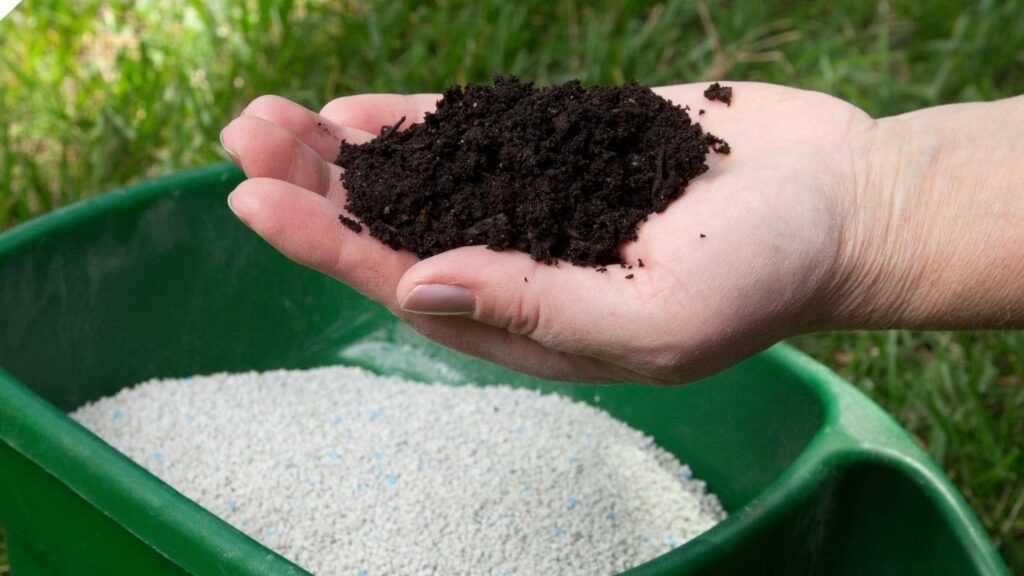While many people encourage you to start gardening, most don’t warn you of the monumental task ahead. Once you’ve decided where to put the beds, what type of plants you want, and how to plant them, you’ll need to identify what fertilizer your plants require for optimal growth! So, to start right and give your plants the necessary nutrients, here’s a guide to starter fertilizers.
Starter fertilizers provide high amounts of nitrogen and phosphorus to emerging plants. The purpose of soil interventions is to encourage root development in young plants while enhancing overall growth. Fertilizers correct soil deficiencies and should be used accordingly.
Starter fertilizers provide plants with a significant boost when used correctly, but what are the characteristics of a good starter? When and where do you use them? What are the pros and cons of these fertilizers? And how do you select the one you need?
What is a Starter Fertilizer?

If you’re new to gardening, your first question might be, “What is a starter fertilizer?” Which is essential to answer going forward.
A starter fertilizer is a soil amendment product that contains (at least) nitrogen and phosphorus (potassium is also helpful).
These fertilizers are liquid or solid-based and are used near seeds (2 inches deep and 2 inches wide), seedlings, and newly transplanted plants (while some are added directly onto seeds, it’s usually not a good idea).
The best starter fertilizers use ammonium polyphosphate (10:34:0) and monoammonium phosphate (11:52:0) as their primary ingredient. A starter fertilizer aims to enhance plants’ growing potential, provide sufficient nutrients, and speed up development to produce healthy, mature specimens.
Starter fertilizers specifically target root development in emerging plants, improving their growing speed, immune responses, and overall health.
Are there Different Types of Starter Fertilizers?
Several different fertilizers work as starters. Some are liquid-based, others solid, some organic, others synthetic.
The nutrient concentrations (specifically nitrogen, phosphorus, and potassium) vary depending on soil deficiencies and what they need to correct. For example, when soil is high in phosphorus, you only need to add a nitrogen-centric fertilizer.
The nutrient sources are essential in determining how effective these interventions are. For example, using urea or diammonium phosphate may damage the seeds/seedlings (when placed directly on them). The types of plants that you’ll grow also determine what starter fertilizer you’ll select.
What Makes a Good Starter Fertilizer?
Selecting the correct fertilizer that addresses the deficiencies in the soil while promoting healthy root development and plant vegetative growth is essential in starter fertilizers.
The two essential criteria these interventions must meet include:
A High Phosphate Content
Phosphate is essential for root development in plants. It is also vital for transportation and energy in the form of ATP (Adenosine triphosphate). Phosphorus does not “move” in the soil, so plants often become deficient.
Starter fertilizers should lean toward higher phosphate values, as they provide seedlings and seeds with the most essential nutrients during their early stages of life.
There is no “supreme” ratio of nitrogen-to-phosphorus-to-potassium, but 1 to 2 to 1, 1 to 3 to 1, 1 to 4 to 2, or 1 to 5 to 0 are ideal. While phosphorus is important, it is vital to have a balanced product, as plants need nitrogen and potassium to grow.
Ammonium-Based Nitrogen
Nitrogen is essential to plant growth, but there are various forms. The most effective form in a starter is ammonium-based because of the “dual” nitrogen source.
Ammonium dissolved in water attaches to soil particles and remains in the soil (it doesn’t wash away). Ammonium is then converted into nitrates during soil microorganisms’ activities. Plants readily absorb nitrates.
When to Apply Starter Fertilizer
Thanks to their root-enhancing properties, starter fertilizers are best used on seeds, seedlings, and newly transplanted plants. Within the realm of seeds and seedlings, starter fertilizers are best used on plants sown in cold, wet soil. The best season for starter fertilizers is spring or late fall (depending on what you’re planting).
Aside from the correct seasons, starter fertilizers are best used when there are deficiencies in the soil. They are frequently used in agricultural practices to replenish the nutrient repositories. However, that does not disqualify these interventions from home use, as there are usually nutrient shortages. Before adding fertilizer to your plants, you’ll need to determine if they are necessary.
A soil sample sent to a lab is the best way to learn your plants’ needs. There are also home testing kits if you’d prefer to do it yourself (but the results may vary/have inaccuracies). A starter fertilizer is essential for growing corn, as these plants benefit the most.
Starter Fertilizers vs. Other Fertilizers
The delineating (dividing) factor between starter and other fertilizers is the composition. I.e., starters usually have higher phosphorus values.
Other fertilizers are usually manufactured to meet specific needs. For example, you may want to improve fruiting and flowering (more potassium and phosphorus), or you may want to increase leaf and stem growth (nitrogen).
Some fertilizers have a 1 to 1 ratio between the nutrients and make excellent boosters at the start of a new growing season.
The Benefits and Drawbacks of Starter Fertilizers
While many garden centers try to convince you to add a starter fertilizer to your garden, examining the benefits and drawbacks is essential before deciding.
The Benefits of a Starter Fertilizer
- There is a plethora of benefits to using these interventions, including: Better root development in seedlings and transplants. Phosphorus encourages the roots to “dig” for nutrients, particularly when placed several inches below the roots. Even if your soil is not deficient, these fertilizers help seedlings establish quicker because the nutrients are readily available to their developing roots.
- Faster growth rates in young plants. Including macronutrients in the soil speeds up plant growth, allowing them to produce large leaves for elevated photosynthesis rates and stronger stems to support this growth.
- Better immune responses due to enhanced growth. A healthy start often perpetuates into a healthy, mature plant. By receiving the correct nutrients, plants are more resistant to diseases and insects, and they out-compeat weeds.
- Plants become drought-resistant. Improved roots mean that plants are better able to find water as they penetrate deeper into the soil.
- An early start to the growing season. These fertilizers work best when the soil is still cold and wet when, in nature, plants need to wait for warmer conditions to start growing, giving you a longer growing season.
The Drawbacks of a Starter Fertilizer
Some of the prominent drawbacks for using a starter fertilizer include:
- Chemical burns. There is a chance of damaging your seedlings through chemical burning (when the salts in a fertilizer draw water out of the plant, leaving it desiccated).
- You may change the pH and chemical composition of the soil. While fertilizers focus on the macronutrients, they often neglect the micronutrients, which could lead to other deficiencies.
- It’s best to test your soil before selecting a fertilizer, which is expensive when conducted through a lab.
- Nutrients may remain in the soil, causing unwanted build-ups, and extra nutrients may run into water bodies.
Should You Use A Starter Fertilizer?
Whether or not you should use a starter fertilizer depends on your soil‘s composition (are there nutrient deficiencies), the season you’re planting in, and what you’re planting.
There are things for and against using these interventions. Providing your plants with nutrients early in life gives them the best opportunities to grow, but using the wrong type of (or too much) fertilizer can cause more damage than good.
While compost/organic sources are best in the long run, they are slower-acting, which is the entire purpose of starter fertilizers. You’ll need to weigh the pros and cons and test your soil before deciding.
Final Thoughts
Starter fertilizers provide seedlings and newly transplanted parts with readily available macronutrients. The most essential components of starter fertilizers are phosphorus and nitrogen, as they encourage root development while increasing overall plant growth, immune responses, and productivity. Before using a starter, it is essential to test your soil.

